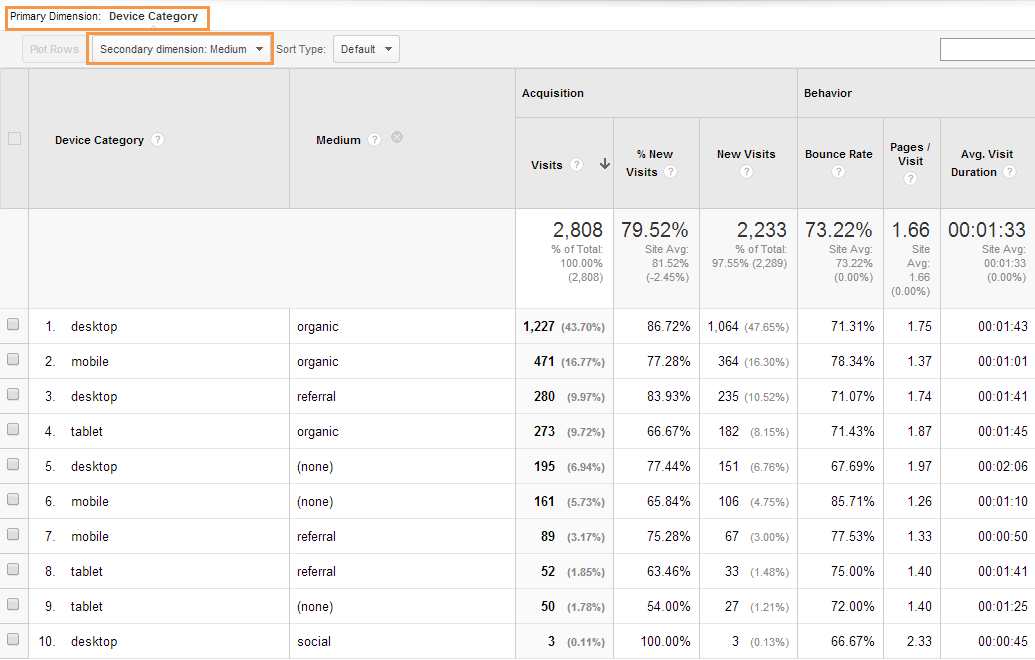The Power of Google Analytics Secondary Dimension: Optimizing Insights
The Power of Google Analytics Secondary Dimension: Optimizing Insights
Blog Article
Unlocking the Power of Additional Measurement Analytics for Enhanced Data Insights and Decision-Making
In the realm of data analytics, primary dimensions commonly take the limelight, but real depth of insights lies within the realm of additional measurements. These added information factors supply a nuanced perspective that can illuminate patterns and connections not easily evident in the beginning look. By harnessing the power of secondary dimension analytics, companies can introduce hidden trends, uncover correlations, and extract more meaningful conclusions from their information. The possibility for boosted decision-making via the use of these second measurements is large, guaranteeing a deeper understanding of complex information collections and leading the method for more informed strategic selections.
Value of Additional Dimensions
Discovering the importance of secondary measurements in analytics reveals the hidden layers of information insights crucial for educated decision-making in different domain names. Additional dimensions give a deeper understanding of key data by offering extra context and perspectives. By including secondary measurements into analytics, companies can extract extra nuanced and detailed understandings from their datasets.
One trick relevance of secondary dimensions is their capability to segment and categorize main information, permitting an extra comprehensive evaluation of specific parts within a dataset. This division allows organizations to identify patterns, patterns, and outliers that could not appear when considering the data all at once. Secondary dimensions help in discovering relationships and dependences in between different variables, leading to more accurate forecasting and predictive modeling - secondary dimension.
Moreover, additional measurements play a critical role in enhancing data visualization and reporting. By adding secondary dimensions to visualizations, such as charts or graphs, analysts can create more insightful and helpful representations of data, helping with much better communication of findings to stakeholders. Overall, the integration of secondary measurements in analytics contributes in opening the complete capacity of data and driving evidence-based decision-making.
Key Benefits of Utilizing Second Measurements
Utilizing second measurements in analytics provides organizations a strategic benefit by enhancing the deepness and granularity of data understandings. By dissecting information using additional dimensions such as time, place, device type, or customer demographics, organizations can reveal patterns, patterns, and relationships that may or else continue to be covert.
Moreover, the use of secondary dimensions boosts the context in which primary data is analyzed. It provides a much more comprehensive view of the relationships in between various variables, enabling organizations to make enlightened choices based on a much more all natural understanding of their data. Furthermore, additional measurements facilitate the identification of outliers, abnormalities, and locations for optimization, inevitably resulting in a lot more reliable strategies and improved results. By leveraging additional measurements in analytics, companies can harness the complete potential of their data to drive much better decision-making and accomplish their service purposes.
Advanced Information Evaluation Strategies
A deep study innovative information evaluation strategies exposes advanced techniques for drawing out useful insights from complicated datasets. One such technique is artificial intelligence, where algorithms are employed to recognize patterns within information, anticipate results, and make data-driven decisions. This method permits for the automation of logical design building, enabling the processing of huge quantities of data at a faster rate than typical techniques.
Another advanced strategy is click site anticipating analytics, which utilizes statistical formulas and maker knowing techniques to anticipate future results based on historic data. By analyzing fads and patterns, businesses can prepare for client behavior, market fads, and prospective risks, encouraging them to make positive choices.
Moreover, text mining and view analysis are beneficial methods for extracting understandings from unstructured information sources such as social networks comments, client reviews, and study responses. By assessing text information, organizations can comprehend customer viewpoints, identify emerging fads, and enhance their product and services based on comments.
Enhancing Decision-Making Via Second Dimensions

Enhancing decision-making with second measurements allows companies to make even more educated and targeted strategic choices. By segmenting customer data based on secondary dimensions like purchasing history or engagement levels, companies can tailor their marketing techniques to particular audience segments, leading to improved conversion prices and consumer contentment. Additional dimensions can aid recognize connections and connections between various variables, making it possible for companies to make data-driven decisions that drive growth and productivity.
Carrying Out Additional Dimension Analytics
When integrating secondary dimensions in analytics, companies can unlock much deeper insights that drive calculated decision-making and enhance general efficiency. Clicking Here This involves recognizing the particular inquiries the organization seeks to address and the data factors called for to address them.

Moreover, companies should take advantage of advanced analytics devices and modern technologies to streamline the process of including second dimensions. These tools can automate data handling, evaluation, and visualization, allowing organizations to focus on translating insights as opposed to manual information adjustment.
Conclusion
Finally, second dimension analytics play a critical role in improving data understandings and decision-making processes. By using sophisticated information evaluation strategies and applying second measurements effectively, organizations can unlock the power of their data to drive strategic company decisions. The essential benefits of utilizing secondary dimensions can not be overstated, as they provide a deeper understanding of information fads and partnerships. It is crucial for companies to utilize second measurement analytics to stay competitive in today's data-driven landscape.
In the realm of information analytics, main dimensions often take the limelight, however the true deepness of insights lies within the world of additional dimensions.Making use of additional measurements in analytics uses organizations a strategic benefit by enhancing the deepness and granularity of information insights. By leveraging second dimensions in analytics, companies can harness the full possibility of their data to drive far better decision-making and accomplish their business purposes.
Executing information validation procedures and routine audits can aid preserve information high quality and integrity.
By using innovative data evaluation useful site techniques and applying secondary measurements effectively, companies can open the power of their data to drive critical company choices.
Report this page